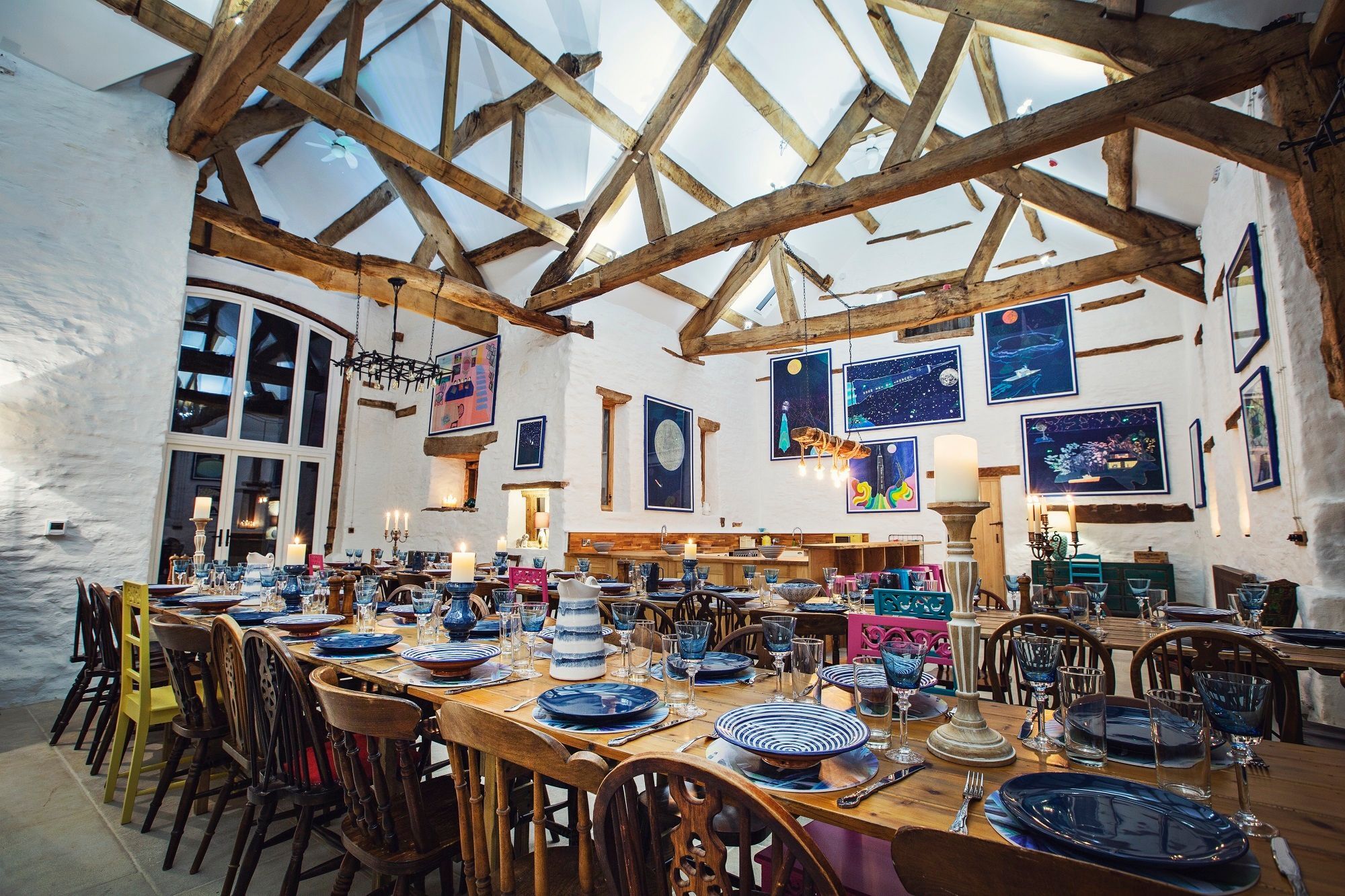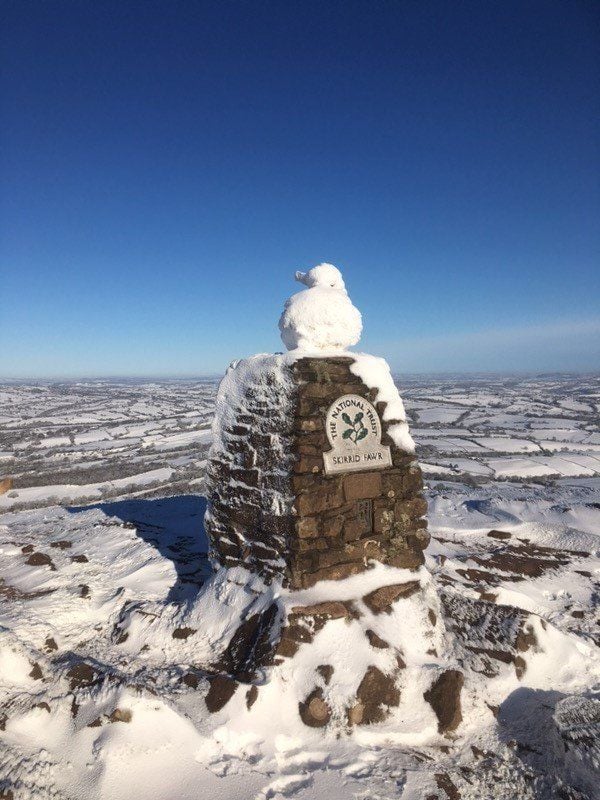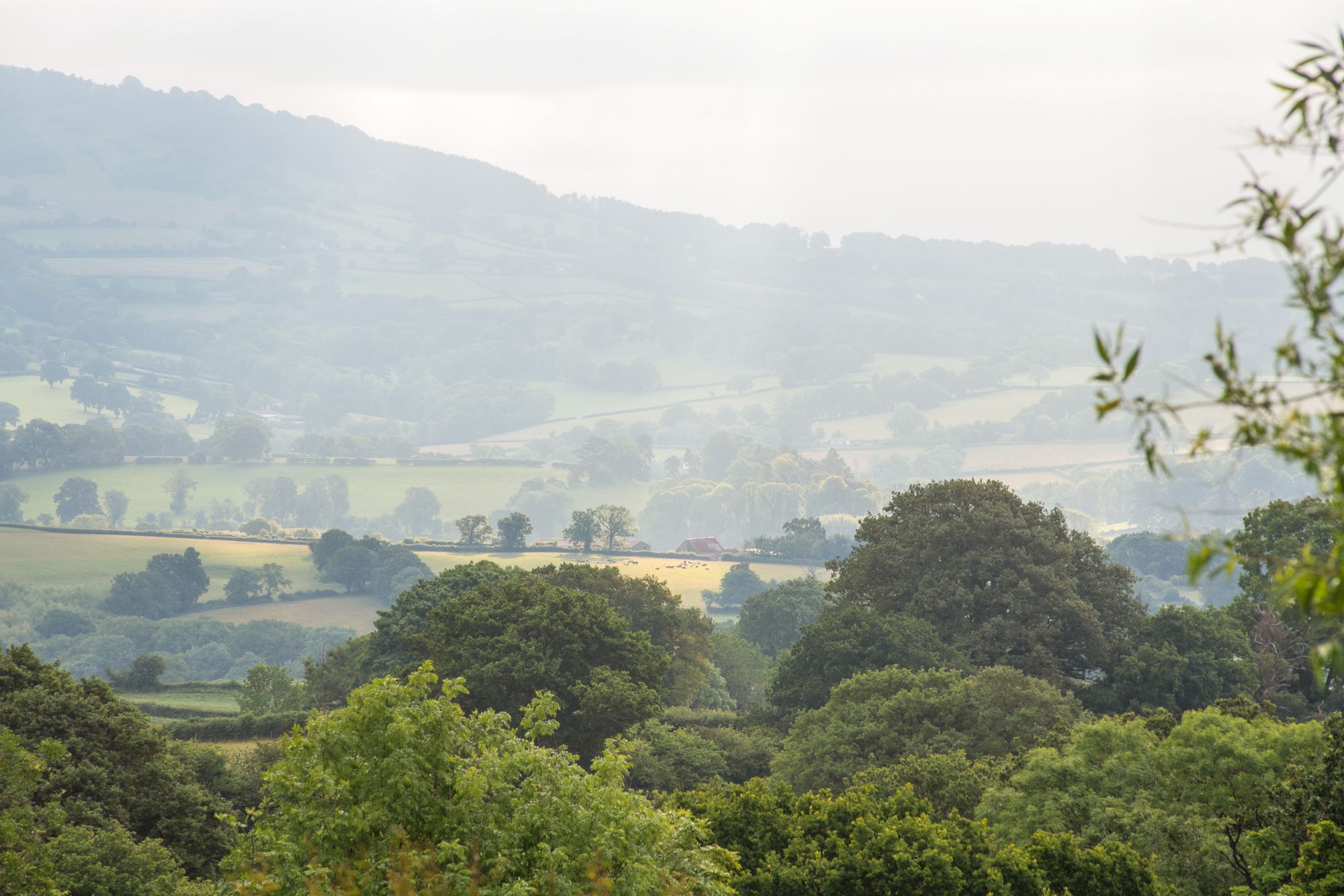History & The Skirrid
The Farmhouse and Great Barn are Grade II listed on account of the original buildings dating from 1570 and this being the home of Captain Thomas James. You will find the original Medieval part at the rear of the farmhouse, with small oak windows overlooking the valley. The uniform front façade was added later, in around 1790.
The large cruciform barn is an exceptional example of a Welsh agricultural building and well worth a visit to admire the ancient timber frame, thick stone walls and views to the front and rear, not to mention the artwork and decor. If not booked, and you would like to have a look, please ask the team who will be happy to give you a tour.


Wern-y-Cwm sits high up on the slopes of the Skirrid or Ysgyryd Fawr, which means the Great Split Mountain. It is technically part of the Brecon Beacons or Bannau Brycheiniog, but at the most eastern tip, on the border of Monmouthshire and Herefordshire. Skirrid Fawr or Holy Mountain, as it is known, is steeped in legend, myth, and is a pilgrimage destination. From the south side you will see the bizarre rocky outcrop called the Little Skirrid, which was probably caused by a landslide in the Ice Age, although locals will beg to differ.
One legend is that the Little Skirrid was broken off at the very moment Jesus Christ died on the cross. This association has led to the soil being considered holy and handfuls were scattered amongst the foundations of new churches built in the area or thrown into the graves of loved ones. Another story tells of when the Devil tried to corrupt the Angel Michael into pursuing his wicked ways. When the incorruptible Archangel refused, the Devil stamped his foot in anger causing the rock to split, resulting in the fallen landmass.
This was the home of Captain Thomas James, the famous sea captain who set off to discover the Northwest Passage which was a faster route to the Americas between the Atlantic and Pacific oceans through the Arctic Ocean. This adventure was in the reign of King Charles I and was funded by the Bristol Society of Merchant Venturers. Some believe that the beams in the Cider House and Farmhouse sitting room were taken from ships of that time.
This great little amateur film gives you the interesting story of this extraordinary man. You will notice nautical associations in some of the décor and room names as a nod to our fascinating history, albeit a little unexpected high up a mountainside.

A climb to the top will reward you with amazing views over 6 or sometimes 7 counties (Monmouthshire, Herefordshire, Powys, Bristol & Avon, Somerset, Gloucestershire and Worcestershire), the opportunity to look out for the ruins of an iron age hill fort and foundations of a Medieval chapel dedicated to Saint Michael. If you walk around the mountain, you will find a distinctive stone called the Devil’s Table. In the 1890’s a hermit lived here offering advice and spells to those who left him offerings. Whether he was a true healer or a con-man nobody knows, but it’s fun to follow the path and find the huge stone which was his cash desk.
On a slightly morbid level, the Skirrid Mountain Inn which is found on the far side of the mountain (a long way off for those not keen on a ghost story), is supposed to be haunted by the souls of 180 rebels from the Monmouth rebellion who were hanged at the Inn in 1685 when it was a court house. If visiting the pub for a pint of local ale, look out for the mounting block in the yard which was reputedly used by Owain Glyndwr when he tried to take control of Wales in the early 15th century. The stories are many, but you are sure to create your own during your Wonderful Escapes at Wern-y-Cwm.
